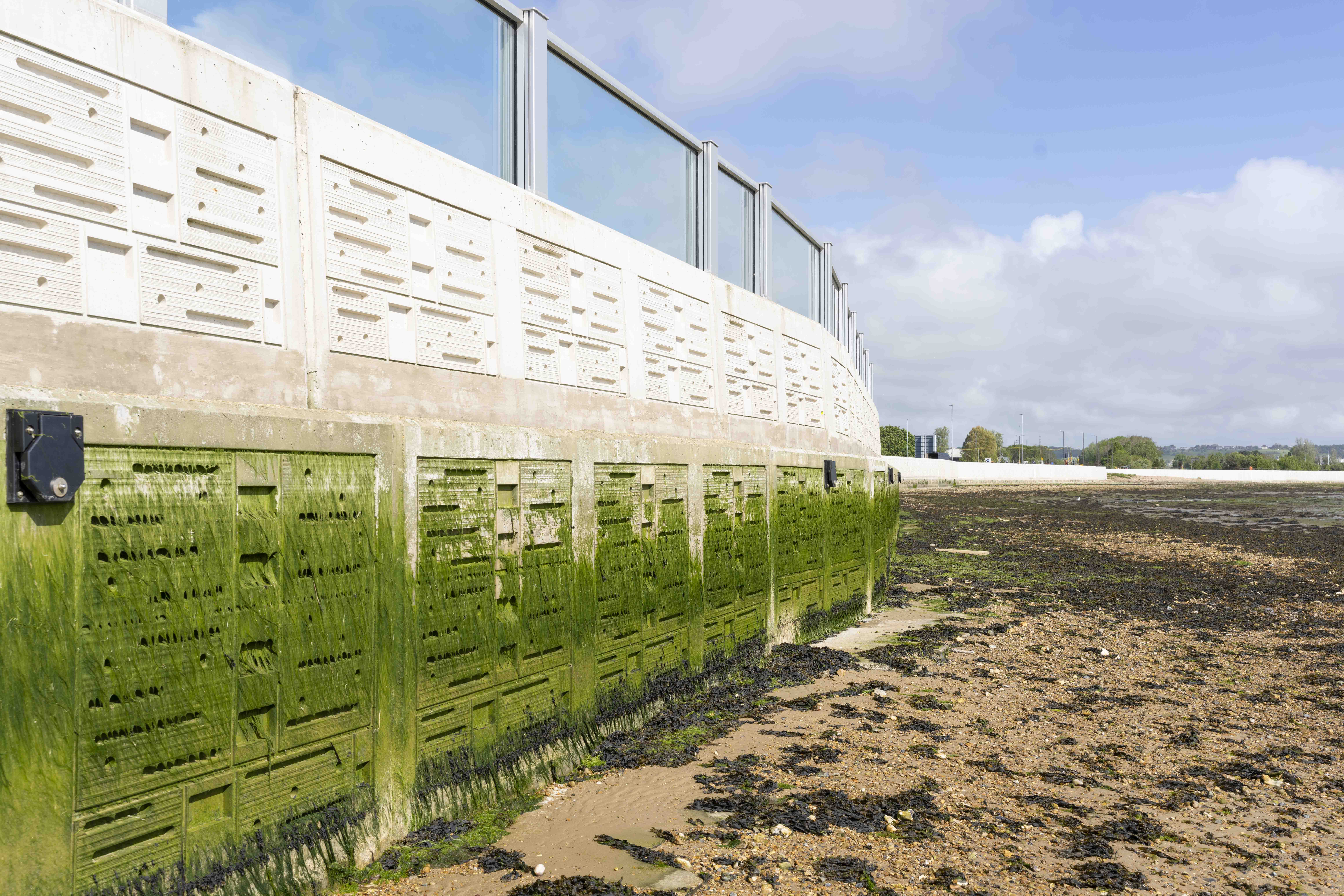UofG researcher co-chairs new report on coastal infrastructure
Published: 16 July 2025
New national guidance on coastal infrastructure has been launched thanks to the work of an international expert at the University of Glasgow.
New national guidance on coastal infrastructure has been launched thanks to the work of an international expert at the University of Glasgow.
Greening coastal infrastructure through eco-engineering (C820) is the first practitioner-led UK publication of its kind focused on enhancing the biodiversity and multifunctionality of engineered coastal assets through eco-engineering approaches.
Larissa Naylor, Professor of Geomorphology and Environmental Geography at the University of Glasgow, was co-chair of project steering group that brought the guidance together for CIRIA, the construction industry research and information association. She was also expert advisor to the lead authors at HR Wallingford, a leading international water engineering company.

Eco-engineering is the process of ‘greening the grey’ by adapting the design of grey concrete and rock-based infrastructure such as flood and coastal protection assets to incorporate innovative features that would create sustainability benefits to surrounding ecosystems and the assets themselves.
Over the past two decades, research and practical trials in the UK and worldwide have shown how eco-engineering can adapt hard coastal infrastructure to support nature, enhance ecosystems and improve resilience.
This new guidance brings together current knowledge and practice to help deliver more ecologically sensitive coastal assets, helping asset owners meet environmental and sustainable construction policy requirements, such as to deliver biodiversity net gain. It also helps address ‘the extinction of experience’ that people in cities can have, by bringing nature closer to urban dwellers.
It sets out how eco-engineering can form part of routine asset management strategies for all infrastructure at the coast, such as seawalls, breakwaters, jetties, piers and bridge footings.
It provides clear direction on where these efforts are most appropriate. particularly where nature-based solutions are not feasible and where society has decided to use structural measures to reduce flood and erosion risk, and/or develop economic infrastructure in our coasts and estuaries, such as the planned green ports. The guide builds on earlier collaborative research led by Prof. Larissa Naylor and includes UK and international case studies, with a focus on real-world applications in estuarine and coastal settings.
C820 is aimed at engineers, asset owners, ecologists, geomorphologists, designers, contractors, manufacturers, planners, local authorities and regulators, as well as policymakers and academics involved in coastal adaptation and biodiversity enhancement.

Professor Larissa Naylor
Professor Naylor said: “It is terrific to see this coastal-eco-engineering guidance being published as it underscores how far the field of greening the grey has evolved. I’m excited to see how this industry-wide backed toolkit will accelerate application of these techniques in the coming years.”
Jack Young, Research Manager, CIRIA, added: “Following numerous academic studies and industry trials, C820 - Greening coastal infrastructure through eco-engineering consolidates modern research and learnings over the past few decades within coastal engineering.
“The document provides detailed information to coastal designers, asset owners, operators and contractors on how to integrate eco-engineering into shoreline management plans. By exploring how to effectively build a business case for eco-engineering initiatives, the guide will prove to be an essential document for professionals within coastal asset management, trying to increase efforts towards environmental and biodiversity targets.
“Endorsed by the UN Ocean Decade, the project has been recognised internationally as a driver for knowledge transfer aimed at the improving our marine environment and biodiversity.”
Professor Naylor describes herself as a ‘doctor for for the planet, a doctor of geography’. She specialises in coastal geomorphology, and addresses the combined effects of human and climate change impacts on the dynamic landscapes we live in which support ecology and society.
Her work has already shaped climate change, flooding and planning policies and climate change adaptation plans, including providing parliamentary evidence in inquiries. She advised the World Bank’s Inspection Panel, the International Union for Conservation of Nature and provided input to the Intergovernmental Panel on Climate Change’s fourth and fifth Assessments. She is currently an invited Expert Advisor to the Council of Europe’s Congress of local and regional authorities.
Her prior UK work in the field of greening the grey was the catalyst for International Guidelines on use of Natural and Nature-Based Features to be expanded to include a chapter on greening the grey.
First published: 16 July 2025
<< July

